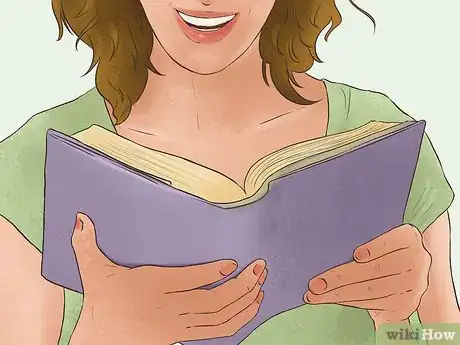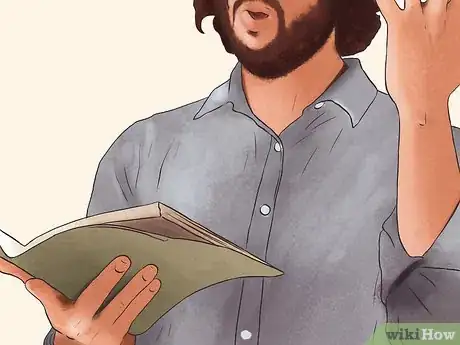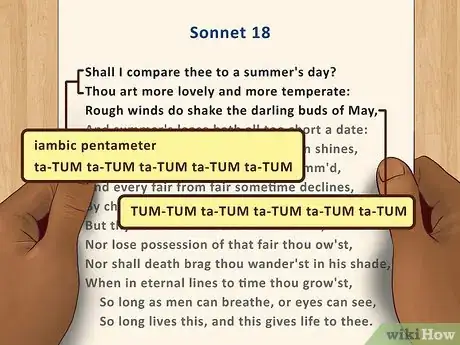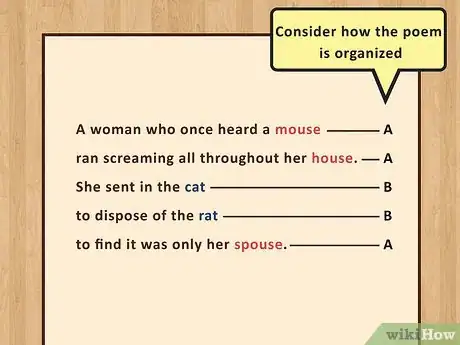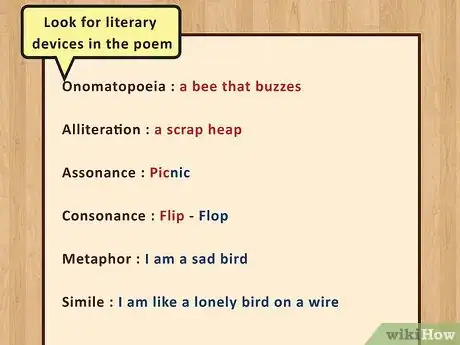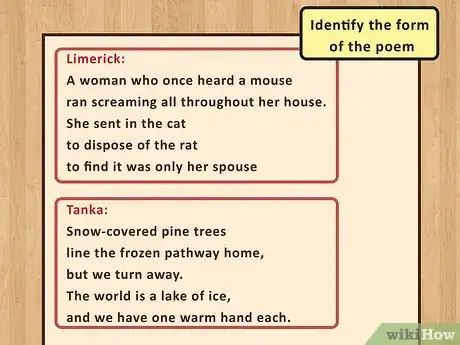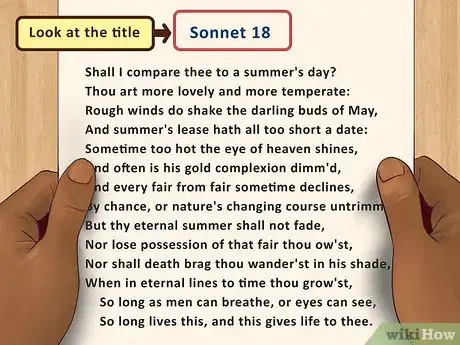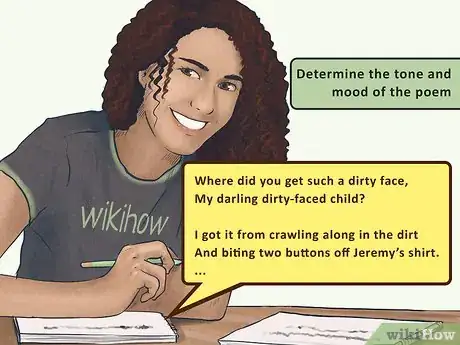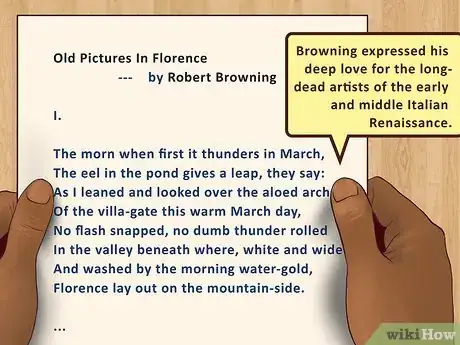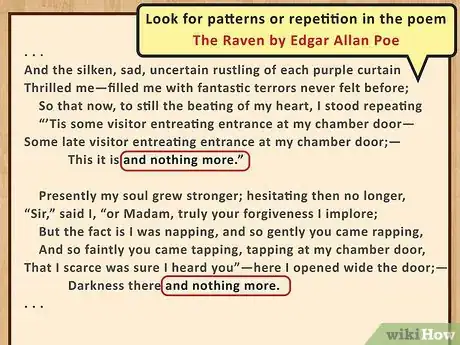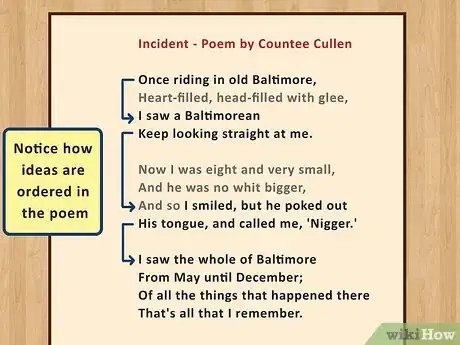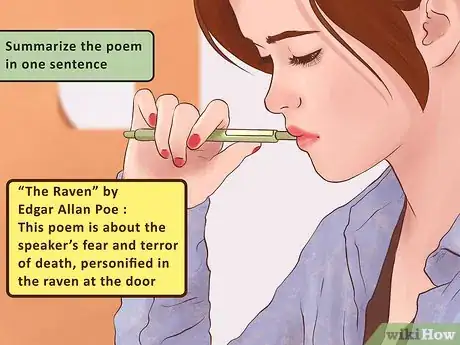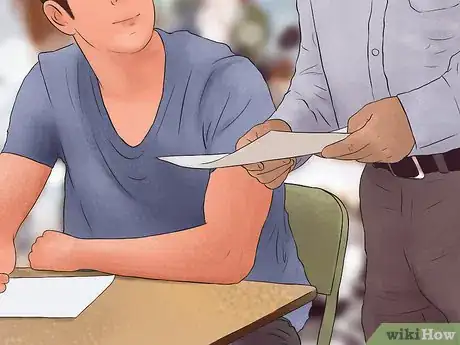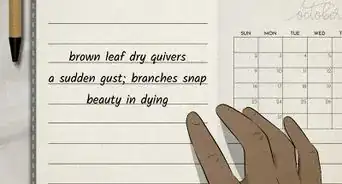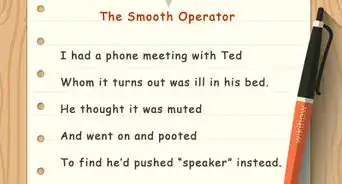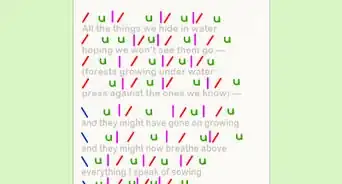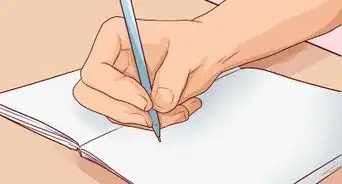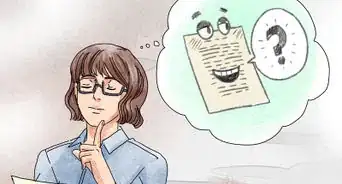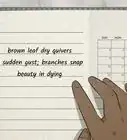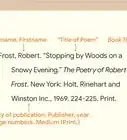This article was co-authored by Stephanie Wong Ken, MFA. Stephanie Wong Ken is a writer based in Canada. Stephanie's writing has appeared in Joyland, Catapult, Pithead Chapel, Cosmonaut's Avenue, and other publications. She holds an MFA in Fiction and Creative Writing from Portland State University.
This article has been viewed 33,118 times.
Studying poetry can be intimidating, especially if you are approaching it for the first time as a reader. You may wonder how you can study a poem in detail and get as much meaning from it as possible. To understand a poem, you will need to read it several times and analyze its form and its content. You may also talk to others about their impressions of the poem so you can get a well-rounded idea of what the poem is about. By working slowly and carefully through a poem, you will be able to improve your comprehension of the poem and get better at studying poetry in the future.
Steps
Analyzing the Form of the Poem
-
1Read the poem to yourself. Start by reading the poem to yourself. Keep a pencil or pen nearby so you can underline, star, or mark any lines that you like or that stand out to you. You may also underline or circle any words or phrases that you find confusing or unclear. You can then return to these notes later to help you analyze the poem.[1]
- Your first reading should be treated as an introduction to the poem. Instead of trying to understand the full meaning and form of the poem, you only need to briefly familiarize yourself with it.
-
2Read the poem aloud. On your second reading of the poem, read it aloud. Read slowly in your normal voice and take your time to read each word. You may read a line over again that you find unclear or confusing. Listen to how the language sounds when read out loud. Consider if it sounds different when read out loud versus when read in your head.[2]
- If there are any commas or periods in the poem, you should view them as pauses. Pause after each comma or period when you read the poem out loud. Punctuation is important and put in the poem intentionally by the poet for a reason.
- If there are any line breaks in the poem, where there are spaces or gaps between lines or words, take the breaks as a pause. Slow down when you read the line breaks and leave pauses when required.
- Depending on the popularity of the poem, you might be able to find an audio recording of the poet or another individual reading the poem aloud. You can listen to such recordings, but read along silently as you do instead of listening passively.
Advertisement -
3Scan the poem for rhythm and meter. Most poems will have a certain rhythm and meter, where they are written in a specific pattern. Reading the poem aloud will help you listen for the rhythm and meter of the poem. The only type of poetry that does not have a clear rhythm and meter is free verse poetry. All other types will have some kind of pattern you can follow.[3]
- Consider if the poet uses rhyme in the poem. Does the poem rhyme at the end of each line? Every other line? You may try noting the rhyme scheme of the poem to help you determine the form.
- The rhyme scheme can help you determine the form of the poem. For example, a blank verse poem will have unrhymed lines. A couplet will have two lines with or without a rhyme, and a tercet will have three line stanzas with or without a rhyme.
-
4Consider how the poem is organized. You should also note how the poet has organized the content of the poem to create a certain form. Check if there are divisions in the poem. There may be stanzas in the poem, such as four lines grouped together to form a stanza. Or there may be no stanzas and simply lines of the poem that rhyme or form a pattern.[4]
- For example, the poem “Digging” by Seamus Heaney begins with two lines together, a couplet, followed by a three line stanza and then a four line stanza. The two line couplet comes in again later in the poem as part of a pattern.[5]
-
5Look for literary devices in the poem. As part of the form of the poem, the poet may use certain literary devices to add a deeper meaning or to create a more detailed image for the reader. Common literary devices include rhyme, onomatopoeia, alliteration, assonance, and consonance. Check to see if the poem contains any literary devices and consider how they add meaning to the poem overall.[6]
- Rhyme refers to the repetition of end sounds between words, for example, "house" and "mouse". It can occur within lines or at the end of two separate lines.
- Onomatopoeia refers to a word that sounds like the noise it mimics, for example, “a bee that buzzes.”
- Alliteration is the repetition of a beginning consonant sound, for example, “a scrap heap.”
- Assonance is the repetition of a vowel sound anywhere within a word, for example, “picnic.”
- Consonance is the repetition of a vowel sound at the end of multiple words, for example, “flip-flop.”
- Metaphor is the comparing of one thing to another, for example, “I am a sad bird.”
- Simile is comparing one thing to another using “like” or “as”, for example, “I am like a lonely bird on a wire.”
-
6Identify the form of the poem. Once you have analyzed the poem’s shape, organization, and rhyme scheme, you can determine the form. There are many different poetic forms, such as sonnets, ballads, acrostics, blank verse, haiku, cinquain, epics, elegies, limericks, sestinas, and villanelles. Determining the form of the poem can help you get a deeper understanding of the piece and consider the intent of the poet.
- You may read examples of a certain poetic form to confirm that the poem is of that form. Or you may look up the characteristics of a certain form to make sure you are correct.
Looking at the Content of the Poem
-
1Look at the title. The title can contain significant clues about the nature of the poem, so you really shouldn't ignore it. Read the title and think about it in the context of the rest of the poem. Ask yourself, What does the poem mean in the context of the rest of the poem? How does the title deepen the meaning of the poem overall?[7]
- Sometimes the title will describe who the speaker or intended audience of the poem is, for example, a poem with the title “For Mother” or “To My Lover.” Other times, the title may describe the subject, genre, or tone of the poem, for example, the title “Sonnet 18” or “Digging.”
-
2Identify the speaker. The poet and the speaker are not always the same person. A poem's speaker might be a character within the broader context of the poem. Note if the poet uses a first person speaker (“I”), a second person speaker (“you”), or a third person speaker (“she, he, they”).[8]
- You can usually identify the speaker without careful analysis, but if you aren't sure, don't worry about it for now. Just make sure you understand what type of speaker is in the poem when you start analyzing the meaning of the poem.
-
3Define unknown words and phrases. When you run across a word you don't understand, stop where you're at and look up the meaning of that word in a dictionary. You may circle these words or underline them so you can remember to look them up later. Defining unfamiliar words can help to deepen your understanding of the poem.
- You may also want to look up possible synonyms for that word using a thesaurus.
- After defining that word, plug the definition or synonym into the poem and re-read the line with that meaning.
- You can apply this same practice to phrases or proper nouns you don't know, but defining the meaning of these elements may require additional research in other texts or online.
-
4Determine the tone and mood of the poem. The tone and mood of the poem are often created by the word choice and the language used in the poem. You may also get a sense of the mood and tone of the poem by listening to the rhythms of the poem when you read it out loud.[9]
-
5Consider the context of the poem. You should get a sense of when the poem was written and why the poem was written, or the context of the poem. Maybe an historical event occurred around the time the poem was written or perhaps a certain style of poetry was popular when the poem was published. Maybe the poet was influenced by a certain painting or art performance when they wrote the poem. Learning about the context of the poem can help to deepen your understanding of the poem and provide a more thorough reading of the piece.
- You may do research on the context of the poem using other texts, scholarly journals, or online sources. You can also consider when the poem was published and use this date to help situate it within the history of poetry and writing.
-
6Look for patterns or repetition in the poem. Patterns and repetition in the poem are often used to reinforce a certain theme or idea. The poet may use a line more than once throughout the poem like a refrain to remind the reader of a certain idea. Or they may use a pattern of words or a pattern of organization to create a certain meaning in the poem. Ask yourself if the poet consistently relies on certain images, topics, or other similar words. Groups of similar words to indicate a pattern.
- For example, you may notice that the poem repeats the same line over and over again throughout the poem, such as “only this and nothing more.” You may then consider why the poet repeats this phrase throughout the poem. Often, the phrase will relate back to a specific theme or idea in the poem.
-
7Notice how ideas are ordered in the poem. Another pattern you could look for is how the ideas in the poem are ordered. Are they placed in a chronological order, moving from present to future? Or do the ideas jump around in time, moving from past to present to future and then back to past?
- You may also notice if the poem does not have any time based ordering and instead seems ordered by another organizing idea, such as scraps of conversation in the poem or the use of another theme.
- For example, maybe the poem has a water-based theme, with the poet describing an ocean in one line and shallow pond in the next. Or maybe the poem has a theme of lost love, and each stanza explores a moment of lost love for the speaker.
-
8Summarize the poem in one sentence. Once you have considered all the elements of form and content in the poem, you should try to summarize the poem in one to two sentences. Write down what you believe to be the overall meaning or theme of the poem. Try to rely on the content and form of the poem as well as your impressions and thoughts. Ask yourself, What is this poem about?
- For example, you may sum up the poem “The Raven” by Edgar Allan Poe with the sentence: This poem is about the speaker’s fear and terror of death, personified in the raven at the door.
- Do not be too concerned about having the right reading of the poem. Poetry is meant to be subjective and your interpretation of the poem could be just as right as someone else’s interpretation. You have the freedom to read the poem as you see fit, as long as you use evidence in the poem to support your reading.
Discussing the Poem with Others
-
1Show the poem to a friend or colleague. You may find it helpful to get some outside perspective on the poem. You may show the poem to a close friend or a peer at school and ask them how they would approach the poem. You may ask the person, What do you think the poem is about? What is your experience of reading the poem?[12]
- You may also ask a colleague at work or at your university for some perspective on the poem. You may approach a colleague in a class on poetry and ask them for their opinion, as they may be more familiar with reading and interpreting poetry.
-
2Discuss the poem in a poetry group. You can also try showing the poem to a poetry group to get their impression of the poem. You may join a poetry group so you can get better at studying poetry or start your own poetry group with friends. Discussing a poem with others in a group can help you realize certain aspects of the poem that you may have missed and allow you to listen to the interpretation of others in the group.[13]
- When you bring the poem into your poetry group, you may start the discussion by talking about your interpretation of the poem as well as your thoughts and impressions of the piece. Then, you may ask the group to share their own ideas about the poem as part of a discussion.
-
3Ask a professor or teacher for guidance. You may find it useful to approach a professor or a teacher who studies poetry to get some guidance. Bring a copy of the poem with you and ask the teacher what they think about the poem as well as your interpretation of the poem. You may have a discussion with the teacher about how to study the poem and the genre of poetry in general.[14]
References
- ↑ http://writing.wisc.edu/Handbook/ReadingPoetry.html
- ↑ http://writing.wisc.edu/Handbook/ReadingPoetry.html
- ↑ https://letterpile.com/writing/How-To-Analyse-A-Poem-For-Exams-Or-Pleasure
- ↑ https://letterpile.com/writing/How-To-Analyse-A-Poem-For-Exams-Or-Pleasure
- ↑ https://www.poetryfoundation.org/poems-and-poets/poems/detail/47555
- ↑ https://letterpile.com/writing/How-To-Analyse-A-Poem-For-Exams-Or-Pleasure
- ↑ https://www.cliffsnotes.com/literature/a/american-poets-of-the-20th-century/how-to-analyze-poetry
- ↑ http://writing.wisc.edu/Handbook/ReadingPoetry.html
- ↑ https://letterpile.com/writing/How-To-Analyse-A-Poem-For-Exams-Or-Pleasure
- ↑ https://www.poetryfoundation.org/poems-and-poets/poems/detail/55343
- ↑ https://www.poetryfoundation.org/poems-and-poets/poems/detail/48860
- ↑ http://writing.wisc.edu/Handbook/ReadingPoetry.html
- ↑ http://writing.wisc.edu/Handbook/ReadingPoetry.html
- ↑ http://writing.wisc.edu/Handbook/ReadingPoetry.html
